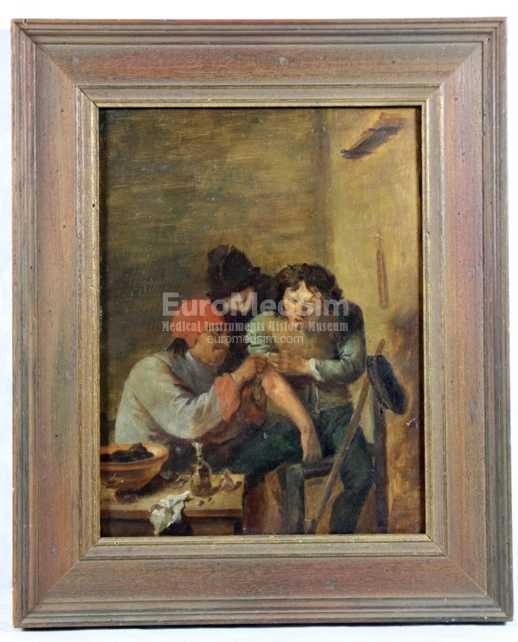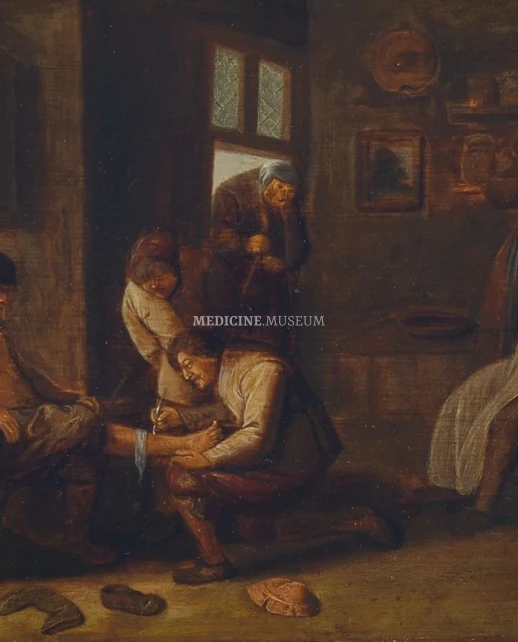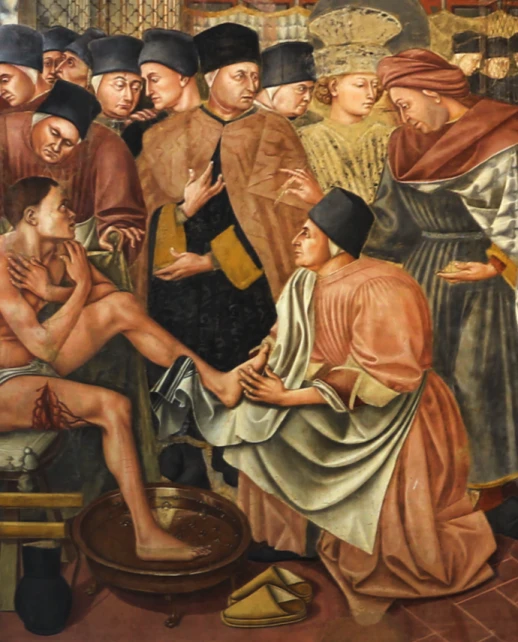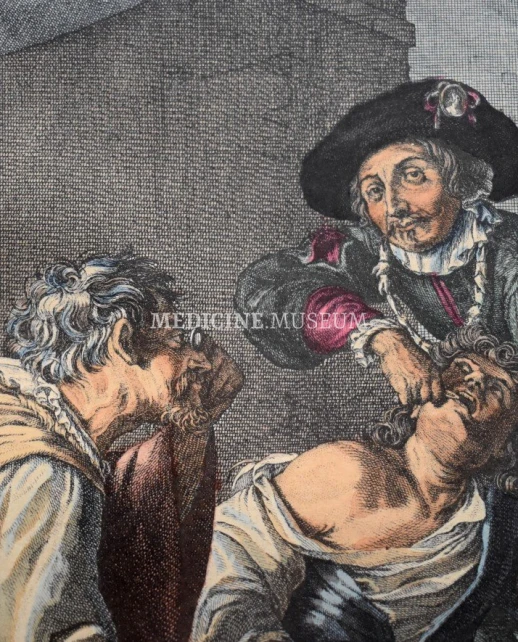Gallery5 results

Netherlands , 1850
Dorfchirurg (Village Surgeon) or Das Gefühl (The Feeling), Scene at the Barber-Surgeon, the painting by Adriaen Brouwer (1605/6–1638), Flemish artist. 19th century German copy after.

France , 2010
Vintage Pharmacy ("Gründerzeit Apotheke"), diorama. Made by French miniaturist Jean Jacques Brisson. Diorama represents a fragment of the interior of an vintage pharmacy about end of 19th century in a glazed box with wall-hanger, integrated into an elegant wooden frame. In the pharmacy there is a presentation cabinet (cupboard) with albarelli (jars) with inscriptions of medicinal substances, the lower part of the cabinet has nine drawers with bronze handles and inscriptions. Next to the cabinet is the pharmacist's workplace, kind of a bureau of drawers with doors and lockers. On the working surface of bureau, pharmacist's scales, mortar and pestle, prescription, pharmacy shop rounds without stoppers, and other containers with substances are placed in a businesslike disorder.

Netherlands , 1850
Unknown dutch traditionalist, 19th century, genre scene: lively practice of a barber-surgeon, cutting hair and operating as a typical characterization of the common guildprofession in styles of the 16th/17th century, oil on wooden panel. Size: 25,0 x 33,0, with gilden frame 34,0 x 42,0 cm

Italy , 1440
da Vinci, Leonardo
Governo e cura degli infermi – The Care of the Sick or The Care and Governance of the Infirm is undoubtedly one of the most famous and oldest depictions of the hospital activities in the world. The fresco is one of six painted by the artist from Siena, Domenico di Bartolo (ca. 1400- ca. 1447). Studying this work will not only reproduce some of the hospital's rooms, but also give an insight into its daily life, which from the early fourteenth century was governed by strict statutes. In the middle there are the Rector and the oblats of the hospital. A surgeon is ready to perform wound care manipulation. To the left, representing physical medicine a carer places a patient on a stretcher, while two physicians discuss the results of an uroscopy. Below, in the centre, a servant washes a young man wounded in the thigh, preparing him for surgery. At right, on the other side, a monk confesses a sick man while two orderlies carry into the room a stretcher.

France , 1750
The tooth puller, сolorized French engraving, presumably 18th century, accompanied by three humorous quatrains, depicts the genre scene. The quack tooth-puller looks at the spectator with a sneer, while his hand armed with an instrument is placed in the mouth of the unfortunate patient, who is trying to hold back a cry of pain. Gawkers and potential clients crowded around them, watching the action in horror, amazement and admiration. The engraving is based on the motif of the painting The tooth puller (1620-1625) by Flemish Theodor Rombouts (1597-1637) which is in the main exhibited collection of the Museo del Prado, Madrid and is one of the outstanding examples of genre Flemish Caravaggisti.